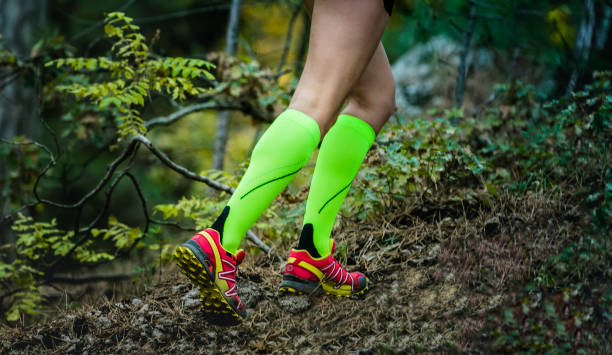Best Plantar Fasciitis Socks & Compression Sleeves

Plantar fasciitis is an extremely serious condition. The common condition affects 1 per 10 individuals, and they range in activity level from restful to athletic.
There are many solutions at home that can help lessen or eliminate the discomfort of plantar fasciitis. For some , the use of compression socks can be a beneficial solution.
The compression socks we have on our list are broken down by category, but most are multipurpose and, unless indicated it is possible to wear them all day and during sports activity.
How to choose
If you're trying to decide on the right sock or sleeve to fit your needs, the most important factor to think about is the amount of pressure you would like against your heel. They are available in one of four compression levels. Here are some questions to ask and the measurements you should look for when choosing the right running compression socks.
How much compression do you need?
If you suffer from issues like deep vein thrombosis and ulcers of the venous system, it's recommended to use socks that are firmer than socks that are more firm.
Many people suffering from plantar fasciitis experience significant relief after taking mild or moderate buy best compression socks online medications. It is possible to test different kinds to find the one that is right for you.
What size do you need?
Pay attention to the length of your sleeves to prevent plantar fasciitis and best plantar fasciitis socks.
The tightness of socks can cause more harm than normal socks. Socks that are too loose won't bring any benefit.
Do the socks fit comfortably in your shoes?
It is also important to consider the strength of the stitching as well as the thickness of the socks.
Care and maintenance instructions for socks
Some socks require handwashing. If you know that you'll be throwing your socks into a washing machine, avoid getting this type because they'll last less If they're not treated properly.
What exactly is plantar fasciitis?
You may not have thought much about your plantar fascia until the pain that ached your heel struck you. The plantar fascia is the ligament that connects your heel to the front of your foot. It is a problem spot for many people. Heel pain affects more than 50 percent of Americans and the leading cause is plantar faciitis. Repeated motions from running or step aerobics, or the added pressure from weight gain can cause damage or tears to the fascia of the plantar, which can cause discomfort and inflammation.
As with runners, plantar fasciitis is frequent among women who are pregnant because the extra weight on the ligament can cause inflammation, which can lead to discomfort. Don't let heel pain stop you. There are simple steps you can take to alleviate the pain until you can run again or another exercise.
Solutions for stretching
Plantar fasciitis is often aggravated due to tight muscles around the calves and the feet. Reduce or eliminate discomfort with these simple stretches. The expert suffered from episodes of plantar fasciitis due to training too much by running too often. This stretching routine, which she is a habit she teaches her clients, helps keep her free of heel pain.
Stretch your calf bones
A few feet away from the wall.
Place your right foot behind your left.
Slowly, gently and steadily bend your left foot forward.
Keep your right knee straight, and your right heel rests on the ground.
Keep the stretch going for between 15 and 30 seconds. Then take a break. Repeat three times.
Repeat the process by shifting the position of your legs.
The stretch targets the gastrocnemius muscle within your calf. As your plantar fascia begins to heal and the pain diminishes, you can intensify this stretch by doing it with both legs slightly bent. Done this way the stretch relaxes the soleus muscle of the lower calf.
The plantar fascia can be stretched by sitting in a chair
The three stretching exercises for seated are also a great way to relieve plantar fasciitis. Maintain your back straight while you do these exercises.
When you are seated while seated, move your feet back and forth over the frozen water bottle, ice-cold can, or foam roller. After 1 minute change to the other foot.
Then you'll need to cross one leg across the other leg for the biggest toe stretch. Hold your big toe for 15-20 to 30 minutes. Repeat this three times and then turn around and repeat the same motion using the other foot.
To make an exercise belt, fold a towel lengthwise in half. Place your feet on the floor, and then place the folded towel on the arch of each foot. Gently draw the ends of your feet towards you by grabbing the towel in your hands. Keep them for 15-30 seconds, then repeat the process three times.